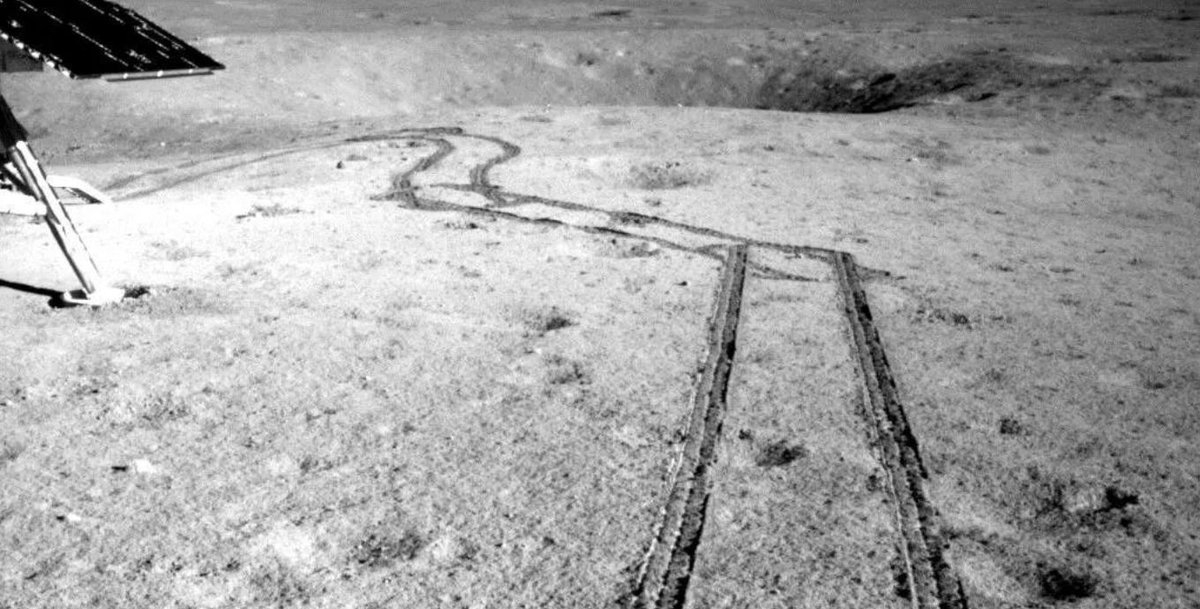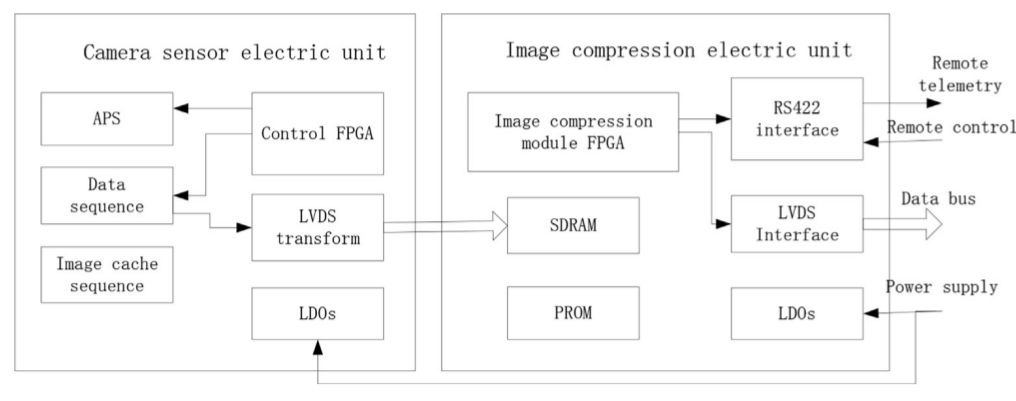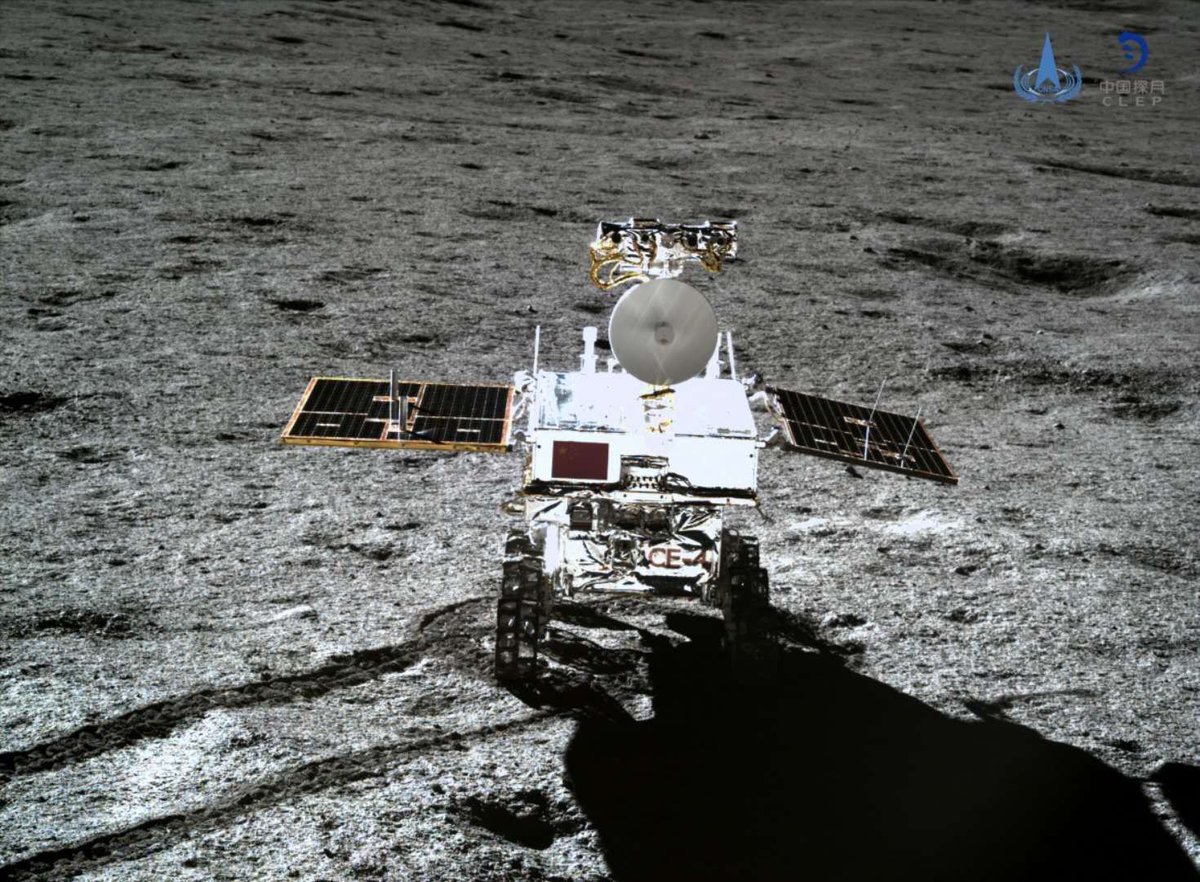The Chang'e-4 mission is the fourth lunar day for the lander and the Yutu-2 rover. About cameras and controllers on devices

How time flies! The fourth earth month of work on the far side of the moon of the Chang'e-4 landing module and the Yutu-2 rover has already arrived. The devices survived a period of extremely low temperature on the third moonlit night, now they have come out of sleep mode and have begun new studies of the lunar surface and outer space.
What cameras are installed on the Chang'e-4 module and the Yutu-2 rover, and what do the cameras take on long lunar days?
Previously published materials about the Chang'e-4 mission:
1. The Chang'e-4 spacecraft made a successful landing on the far side of the moon and sent the first photo
2. An on-board video of the preparation and landing processes, as well as a panorama of the reverse side of the moon from the Chang'e-4
3. Video of the rover descent process “ Yutu-2 ", its first meters on the surface of the moon. A two-week dream on the moon is over
4. Pride and passion, the story of turning a dream into a space project
5. NASA's lunar orbiting probe took the first pictures of the Chinese Chang'e-4 station - two pixels of light
6. The Chang'e-4 module and the Yut rover -2 "ready for the second night on the far side of the Moon
7. NASA's lunar orbiting probe took new pictures of the Chinese Chang'e-4 station - closer and clearer
8. Interesting facts about the history of the Chinese lunar program and the Chang'e-4 space mission
9. The Chang'e-4 mission is the third lunar day. Rover "Yutu-2" in search of ... stones
10. Mission "Chang'e-4" - scientific equipment on the landing module and the satellite-relay
1. The Chang'e-4 spacecraft made a successful landing on the far side of the moon and sent the first photo
2. An on-board video of the preparation and landing processes, as well as a panorama of the reverse side of the moon from the Chang'e-4
3. Video of the rover descent process “ Yutu-2 ", its first meters on the surface of the moon. A two-week dream on the moon is over
4. Pride and passion, the story of turning a dream into a space project
5. NASA's lunar orbiting probe took the first pictures of the Chinese Chang'e-4 station - two pixels of light
6. The Chang'e-4 module and the Yut rover -2 "ready for the second night on the far side of the Moon
7. NASA's lunar orbiting probe took new pictures of the Chinese Chang'e-4 station - closer and clearer
8. Interesting facts about the history of the Chinese lunar program and the Chang'e-4 space mission
9. The Chang'e-4 mission is the third lunar day. Rover "Yutu-2" in search of ... stones
10. Mission "Chang'e-4" - scientific equipment on the landing module and the satellite-relay
At the moment, 88 days (2212 hours) have passed after the Yutu-2 rover landed on the Moon surface and 115 days (2760 hours) after the Yutu-2 rover launched from the Sichan cosmodrome as part of the Chang'e-4 mission to the Moon.
Fourth lunar day on the far side of the moon: The

planned duration of the landing module is one year, the rover is three months.
In fact, the Yutu-2 rover has already reached its estimated working life of 2160 hours.
This is not a record for the Chang'e lunar missions, the first Chang'e-3 lander, located on the visible part of the Moon since December 2013, still shows signs of life (telemetry and data from various instruments), but its partner in this the landing - the first rover “Yutu”, although it lost mobility 40 days after the start of productive work on the lunar surface, until mid-2016, transferred data to the MCC in a stationary mode.
Data on the modules of the lunar mission "Chang'e-4":
- the descent module "Chang'e-4" (4.4 meters between the opposite landing supports, weight 1200 kg.);

- Yutu-2 rover (height 1 meter, width 1 meter (without solar panels), 1.5 meters in length, two folding solar panels, six wheels, weight 140 kg.).

New photos from the back of the moon
Moon track from Yutu-2 rover wheels and a shadow from an antenna and a platform with a panoramic camera:

Several craters (beautiful shadows with shadows) and mountains in the background:

These photos are from the scientific article “Lunar farside to be explored by Chang'e -4 "in the April issue of Nature Geoscience.

Small craters near the landing site:


The Yutu-2 rover explores the surface of the Moon:

Shards of stones in small craters (photo from the Yutu-2 rover):

Small stones along the movement of the Yutu-2 rover:

Very unusual dark stones near the place Landing:

What cameras are installed on the Chang'e-4 module and the Yutu-2 rover?
Two cameras are installed on the Chang'e-4 landing module:
- Landing camera (LCAM);
- landscape camera (Terrain camera - TCAM).
The LCAM landing camera (0.5 kg, size 116x100x70.4 mm) was installed on the bottom of the Chang'e-4 module, turned on automatically at an altitude of 12 km above the lunar surface to record the landing procedure with a resolution of 1024x1024 pixels, 10 frames per second.
Video of the landing procedure from the LCAM camera - several thousand frames are collected in one video
Characteristics of the LCAM landing camera:

Communication diagram of the elements of the LCAM landing camera:

Data is transmitted using the LVDS (low-voltage differential signaling) interface.
After landing on the moon, the LCAM camera captures only one and the same frame with the landing support: the

TCAM landscape camera (0.64 kg, size 92x105x118.9 mm) is installed at the highest point of the Chang'e-4 landing module on a special bracket that allows the camera It can be rotated 360 degrees around its axis and can tilt the camera up or down to an angle of up to 120 degrees. Panoramic photographs of the surface and elements of the landing module, tracking the rover and exploring the area around the landing zone are TCAM functions.
Features of the TCAM landscape camera:

The connection diagram of the elements of the TCAM landscape camera:

Panorama of the landing site:

LCAM and TCAM cameras on the landing module:

The Chang'e-4 landing module is stationary and its surface photographs in the landing zone are primarily important for understanding what types of surfaces are actually around the module. After all, there are a large number of small craters and stones, and they can interfere (in the worst case) with the procedure for lowering the rover. Since after landing, the Chang'e-4 module cannot change its position and make a “jump” to another zone that is more convenient for landing.
The Yutu-2 rover has a dual panoramic camera (Panoramic camera - PCAM).
The PCAM panoramic camera (0.69 kg, size 90x110x120 mm) is installed at the highest point of the Yutu-2 rover on a special wide mast-bracket, which allows the camera to rotate 360 degrees around its axis for photo-capturing of a panoramic view of the surface.
Since the camera consists of two identical modules, they are used to compose a 3D image using the binocular stereo imaging method. To obtain a color image in a PCAM camera, a Bayer filter (arrays of color filters) is used.
Characteristics of the panoramic PCAM camera:

Communication scheme of the elements of the panoramic PCAM camera:

General view of the surface panorama from the Yutu-2 rover:

PCAM camera on the rover:

On January 3, 2019, after completing all stages of the successful landing procedure and installing independent communication channels with Chang'e-4 devices (the landing module and the rover), the era of the photo of the study of the far side of the moon began.
Photos from cameras:
Landing camera LCAM:














Terrain camera TCAM:


























Panoramic camera PCAM (rover):








The Yutu-2 rover is a mobile and highly productive space partner of the Chang'e-4 landing module.
The Yutu-2 rover drove over 160 meters along the complex surface of the far side of the moon.
Way of the Yutu-2 rover in three lunar days:


I wonder how the front wheels work on the Yutu-2 rover when turning in place:



Video of the launch of the rover "Yutu-2"
The landing site of the Chang'e-4 mission:

Since the reverse side of the Moon also has a more complex terrain than the side visible from the Earth, in the process of moving along the surface, the Yutu-2 rover encountered more serious motor problems and interference compared to those previously encountered by his predecessor, the rover "Yutu," sent to the lunar surface in December 2013.
Unfortunately, the first Yutu rover of the Chang'e-3 mission, on January 25, 2014, was technically immobilized (failure of elements as a result of a collision) after overcoming 114.8 meters on a complex lunar surface.
The lunar surface in the landing zone of the Chang'e-4 landing module is replete with folds, numerous pebbles and small craters, after making each of its small movements, the Yutu-2 rover should stop, take a picture of the surface around and send this data back to Earth via satellite- repeater.

Scientists, operators at the MCC and engineers on Earth then process this data and chart a further route along which the Yutu-2 rover will follow.
Yutu-2 rover antennas must be configured so that they point to a repeater satellite to correctly send and receive control signals, while rover solar panels should be optimally tilted to receive a lot of sunlight to maximize output electricity at the time of the data transfer.

Six-wheeled rover "Yutu-2":
- total rover weight is about 140 kg (310 lbs);
- load capacity of about 20 kg (44 lbs);
- can move on slopes and has automatic sensors to prevent collision with other objects;
- The rover is supplied with electricity by means of two solar panels, allowing the rover to work during a lunar day;
- максимальная скорость 200 метров в час (данную скорость на Луне все равно не достигнуть – так как элементы на поверхности не дадут разогнаться и выведут из строя ровер раньше);
- максимальная площадь исследования – 3 кв. км;
- расчетное время работы – 3 месяца (2160 часов);
- максимальная расчетная дистанция – 10 км.

The wheel elements of the Yutu-2 rover are indeed its complex design feature, which, at the design stage, had to be further developed by the engineers of the Chinese Academy of Space Technology. They refused to use the tracks because they turned out to be less maintainable and vulnerable in tests.
For example, if a small stone gets inside the track mechanism, the rover may become stuck and lose track. In contrast to the wheeled implementation, which is more reliable and has an increased resource, it can also safely move stones up to 20 centimeters high.

However, if the Yutu-2 rover rolls over, it will not be able to return to its working position again. The solar panels on the sides of the lunar rover are very fragile, they can crack or become dusty after falling, which will render them unusable.

Thus, in the process of remote control of rovers, it is necessary to concentrate on keeping the position of the Yutu-2 rover as stable as possible and not letting it fall when moving along the surface.
But how can all these cameras on the Chang'e-4 landing module and the Yutu-2 rover be controlled, transmit data and receive power?
About on-board controllers and the power supply system of the landing module and the rover.
The Chang'e-4 landing module and the Yutu-2 rover have on their board special payload controllers, which are used to receive, store and control scientific data coming from different modules and elements of devices.
Further, the data of control signals, scientific and photo data using the RS-422 (telemetry and control) and LVDS (scientific data) interfaces are transmitted to the central controllers of the landing module and rover, which transmit them through the communication system to the MCC on Earth using a satellite repeater "Tseyuqiao".

The payload controllers of the Chang'e-4 landing module and the Yutu-2 rover are equipped with a central processor and FPGA arrays.
Also, with the help of the payload controller elements, the on-board voltage + 28V is converted to the voltage for secondary power supplies + 5V, + -15V, + 3.3V, as well as the constant monitoring of voltage and temperature values of the controller modules and external devices.
As microprocessor the following is used: ATMEL AT697F (Rad-Hard 32 bit SPARC V8 Processor).

As programmable logic integrated circuits (FPGA) are used: an array of six XILINX XQR2V3000-4CCG717 (Radiation-Hardened QPro Virtex-II FPGA).
For additional protection of the microcircuit against radiation, aluminum screens with a thickness of at least 3.8 mm are used.
Communication and data transmission schemes of equipment on the Chang'e-4 landing module:

where:
- LFS - Low Frequency Spectrometer;
- LND - Lunar Lander Neutrons and Dosimetry;
- TCAM - Terrain Camera;
- LCAM - Landing Camera.
Communication and data transfer schemes of equipment on the Yutu-2 rover:

where:
- LPR - Lunar Penetrating Radar;
- ASAN - Advanced Small Analyzer for Neutrals;
- VNIS - Visible and Near-Infrared Imaging Spectrometer;
- PCAM - Panoramic Camera.
By the way, earlier in publications I already talked about almost all the scientific equipment of the launch module and the rover , only one scientific device remained incognito - LPR (Lunar penetrating radar) - which can be seen externally, like two "antennae" behind the rover.
I will try to write about this interesting device a separate publication.

